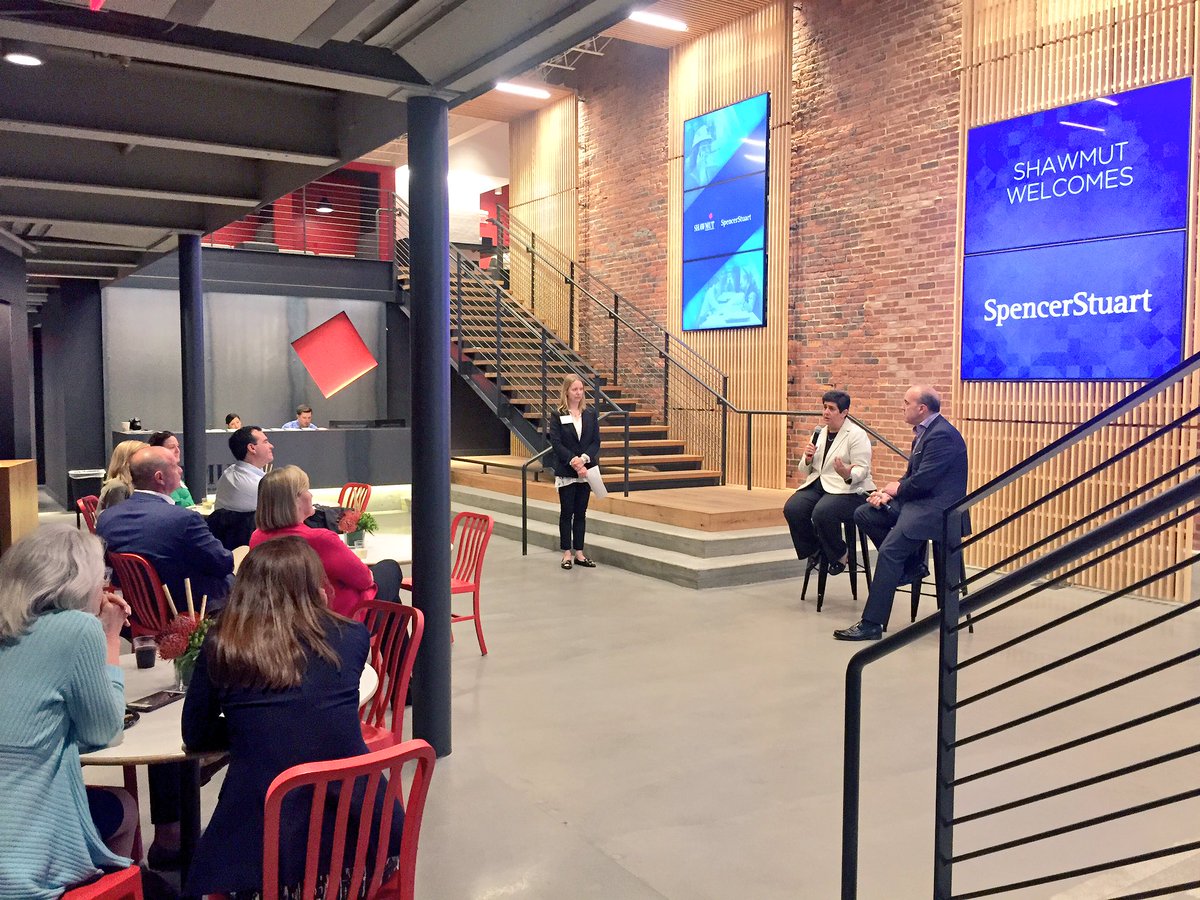June 21, 2017
Cultural Transformation: The Journey from Traditional Construction Company to "Best Workplace"
Spencer Stuart recently hosted a discussion on talent and organizational culture with recent client, Les Hiscoe, CEO of Shawmut Design and Construction and chief people officer and Spencer Stuart placement, Marianne Monte. Having recently been named one of the nation’s best medium-sized workplaces by Fortune Magazine, Les and Marianne shared how they shifted to a more people-first approach and shared suggestions for what other organizations can do to drive a successful cultural transformation.
1. Make talent a top priority
When Hiscoe first assumed the CEO role, his main goal was to turn Shawmut into a “forward-thinking construction company.” To do that, it would take a world-class talent organization that could attract and retain the best people. However, the organization had a long way to go not only in developing its talent system, but in rethinking its culture. “We were a rough-and-tumble, fast-paced construction company focused on taking care of clients,” he said. “The culture needed more balance. How do we align the team to think at the enterprise level? How do we drive change management, diversity and inclusion?” A significant part of the solution was to build upon the already strong HR team, bringing on new leaders from other industries to inject fresh thinking into the organization.
2. Embrace “future of work” trends
The organization solicited feedback from its people, and one comment was particularly worrying: “You work people to the bone.” In order to retain and attract the best talent, that had to change. Monte and the leadership team rolled out the Shawmut Flex program, which empowers staff to design their own workdays. From working from home to shift-sharing, people are given more ownership over their jobs. “This is especially unique in this industry and was a big win that gained us momentum,” said Monte. “Turnover went down dramatically during the first year we rolled it out.” This ownership mentality has also spurred greater problem-solving and innovation. Employees at every level are invited to share ideas with members of the executive team.
Shawmut is also trying to tap into the millennial talent base. It has developed a successful college-entry program that rotates students through various disciplines, which is helping to build the company’s talent pipeline. The program is also a way for leadership to gain insight into what truly motivates this cohort. “We Googled ‘millennial’ and shared the most common results with the students,” said Hiscoe. “Eleven were positive, and three were related to ‘entitled’ and other stereotypes. We’d read them to the group and ask for their reactions.” One learning was that millennials are looking for mentorship and career mobility, which led Shawmut to rethink its traditional silo approach to talent development and identify ways to combat negative stereotyping.

Discussing how organizations can drive a successful cultural transformation at Shawmut in Boston. Photo: Shawmut Design and Construction
3. Commit to improving diversity and inclusion
Most organizations know that diversity has a tangible impact on the business. According to McKinsey, companies in the top quartile for gender diversity are 15 percent more likely to have financial returns above their respective national industry medians. In a traditionally male-dominated industry (Catalyst reports that women make up only 9.1 percent of construction industry employees in the U.S.), Shawmut had an uphill climb to improve its diversity.
“If I put out a goal to be a world-class talent organization, then that doesn’t exist without inclusion,” said Monte. “We needed a real focus and definitive action plan and within the last year, we’ve done our best work: 53 percent of entry-level positions are female. But, less than 10 percent of executive roles are held by women. This is a real problem, and this is why we need to change.”
To improve diversity, the chief human resources officer (CHRO) has to be a vocal proponent, but diversity can’t just be an HR initiative. The entire company has to be aligned on that goal. “There is no silver bullet, no magic — just deep commitment,” said Hiscoe “You need to create environments where people can succeed and fail and grow their careers.”
4. Encourage mobility within the organization
Flexibility and mobility shouldn’t just apply to day-to-day work, but to overall career growth. Earlier, only the most successful people within a discipline had an opportunity to advance or move outside their silos; today, talent is exposed to different areas of the business. “We have a historic culture of asking permission,” said Hiscoe. “I came up as a division head. I had to change my attitude as I came into the CEO role. I like to move people around a lot more.” Talent development planning involves meetings with the entire leadership team, who discuss assignments to different verticals within the organization. The exposure to different parts of the company imbues key talent with a sense of ownership over the broader business, not just their specific discipline.
5. Ensure a strong rapport between the CEO and CHRO
A culture that focuses on flexibility, innovation and talent development cannot be sustained without strong alignment between the CEO and CHRO. Hiscoe said he was looking for a human resources leader who would be his “right hand” and lift the entire team. For Monte, the opportunity to advance the talent agenda with a newly promoted CEO was a perfect challenge for her. “I knew this was a unique chance to make a great company into something extraordinary. Everyone has some skin in the game here.”
Fleur Segal is a consultant in Spencer Stuart’s Boston office and a member of the firm’s Human Resources Practice. She brings nearly two decades of experience to her role, specializing in recruiting chief human resources officers, senior talent management and rewards leaders, as well as fulfilling HR generalist and specialist positions. Reach her via email and follow her on LinkedIn.